Print History: A Lahore Print House - Munshi Gulab Singh & Sons
A schoolteacher laid the foundations of what was to become one of the largest printing presses in pre-partition Punjab. A visit to the press in the 1910s reveals the contours of a print behemoth
31 Aug 2022 | By Murali Ranganathan
As late as 1850, Lahore, the seat of the recently vanquished Sikh Empire, was a print backwater. The East India Company, after the Second Anglo-Sikh War (1848–49), began to administer the vast territories of Punjab and the border areas, later designated as the North-West Frontier Province. The famous diamond, Kohinoor, which had been in the possession of the deposed child-king Maharaja Duleep Singh, was sent to London in 1850 as part of the war spoils, though officially, it was designated a present. In the same year, Munshi Harsukh Rai founded the Kohinoor Press in Lahore and began publishing Kohinoor, the first Urdu newspaper of Punjab, from January 1850. Like its namesake, Kohinoor became a shining star in the world of Urdu journalism because of its superior editorial content and judicious choice of news material.
The recently subdued military generals of Punjab stayed away from the ‘Sepoy Mutiny’ which raged across north India in 1857–58. In fact, they supported the East India Company and fought on its behalf. Once the dust of the ‘Mutiny’ settled down in 1859, the political map of the region was completely redrawn. Many princely states were abolished and Delhi and its hinterland were administered by the Lieutenant-Governor of Punjab from Lahore. Delhi, with its vibrant print culture and over twenty printing presses, had been completely destroyed. Some printers were executed, others arrested; a few were exiled and the rest fled. Many of them sought opportunities in other cities which had survived the carnage. Lahore was one of their chief destinations. New printing presses were being opened in the city and older ones saw fresh investments. By the 1860s, Lahore had emerged as one of the print centres of colonial India.
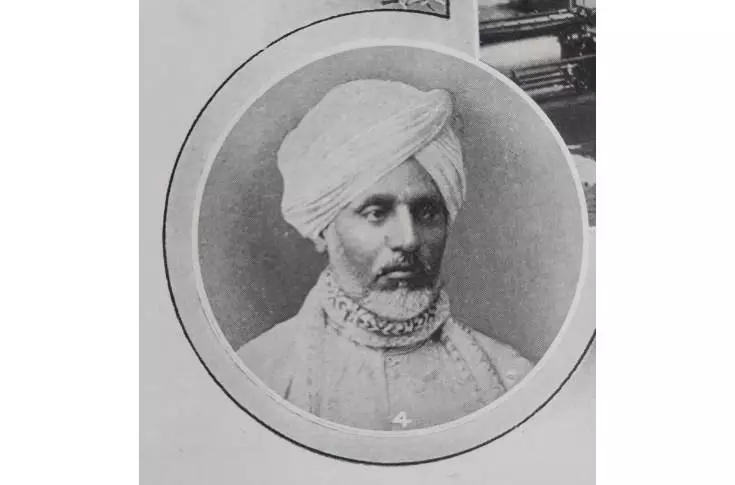
Rai Sahib Munshi Gulab Singh
One of the pillars of colonial rule was a new system of education for Indians which, by providing significantly better economic prospects for a chosen few, had proved popular in other parts of India. The presidencies of Bombay, Madras and Bengal had devised a system of modern education which was largely delivered in local languages at the school level. New schools were started in most cities and towns. The annual production and printing of textbooks in the local languages, a constantly evolving and ever expanding project, provided impetus to the print industry in these regions in the 1830s and 1840s. A similar process was set into motion in Punjab in the 1860s and 1870s. Textbook committees were formed, subjects were identified, authors were assigned to write textbooks, and printers were contracted to print them. The main literary language in Punjab was Urdu, which was the lingua franca of the entire population. These new developmentsoffered opportunities for numerous print entrepreneurs: writers, editors, translators, illustrators, compositors, scribes, and printers. One such man was Munshi Gulab Singh.
In the 1910s, Somerset Playne, who took upon himself the responsibility of profiling Indian industry in his encyclopaedic book, The Bombay Presidency, the United Provinces, the Punab, etc: their history, people, commerce, and natural resources (1917–1920), wrote about a visit to the printing press established by Munshi Gulab Singh.
The Persian Munshi
Munshi Gulab Singh begin his career as a schoolteacher. Though normally used as an honorific for those who were proficient in the Persian language, the word munshi also meant a teacher, especially in schools across north India. Gulab Singh taught his students through the medium of Urdu. It is not known which subjects he taught and at what level. At any rate, he “was indefatigable in his efforts to impart sound instruction to those under his care, and his observations leading him to the opinion that the text-books then in use were not altogether suitable for the scholars, he devoted his leisure hours to the compilation of others, which, upon publication, gained the hearty approbation of the Department of Education of the Government of the Punjab.” The textbooks written by Gulab Singh had to be approved by the Textbook Committee of the Punjab Government. This meant that he had to closely interact with the members of the Committee as well as bureaucrats in the government.
After a few years of juggling his responsibilities as a schoolteacher with that of a writer, Munshi Gulab Singh decided to enter the arena of printing. In 1873, he established a printing press which he named the Mufid-i-Am Press, and as its name suggests, strived to work for the ‘public good’. Along with the printing of textbooks, he seems to have developed clients from other sectors, especially religious institutions which now began to see the medium of print as a valuable avenue for their activities.
The biggest customer of print in Punjab was the government itself. The ever-increasing scope of its activities meant that its print needs multiplied every decade. For example, the conduct of the 1881 census in the Punjab province necessitated the printing of census data collection forms in the millions. This lucrative contract was won by the firm of Munshi Gulab Singh & Sons and set the tone for the future prospects of the printing firm. In due course, the company was designated as ‘Government Printer’ by the Punjab Government. This meant that it “was entrusted with the printing and distribution of all books, maps, and diagrams issued under the authority of the Director of Public Instruction in the Punjab. This huge undertaking necessitated an enlargement of buildings, the importation of chromolithographic plant, and the employment of workmen skilled in artistic printing. A special publishing department also became necessary in order that the circulation of so large a quantity of productions might be carried out with efficiency and despatch.”
The Printing Press
The printing establishment of the firm, which functioned under the name of Mufid-i-Am Press, was one of the biggest presses in operation in India by the early twentieth century. Its sprawling premises were located on one of the main thoroughfares of the city. Besides the entire range of printing machines, it also had its own type foundry.
The Lahore works cover an area of about three acres, and they comprise machine and compositors’ rooms, and a separate department under European supervision for bookbinding, drawing and artists’ work, and lithography, together with large godowns for the storage of paper and blocks, in addition to other premises usually found in large concerns of this character. Renewals of type are supplied by the foundry in which castings are made, and all kinds of repairs, whether to buildings or internal fittings, are executed in the workshops by thoroughly skilled artisans.
The machinery and plants include two steam engines of 20 h.p. and 10 h.p. respectively, a Monotype, double Super Royal machines (the maximum size of sheet to be printed being 44 inches by 29 inches), the latest patterns of rotary machines, 13 Litho machines of various sizes, 4 quadruple crown rotary machines, an aluminium dye-stamper, 12 letterpress machines, wire-stitching and cutting machines of different sizes, ink-grinding and knife and blade sharpening machines, a stone planing machine, and many others. Lithographic work is done upon stone and aluminium plates, and the three-colour process is carried out in the most artistic manner, while every description of book-binding is turned out in faultless style by experienced hands. Messrs. Gulab Singh & Sons employ about five hundred hands at Lahore, while they have also a large staff of katabs or vernacular writers.
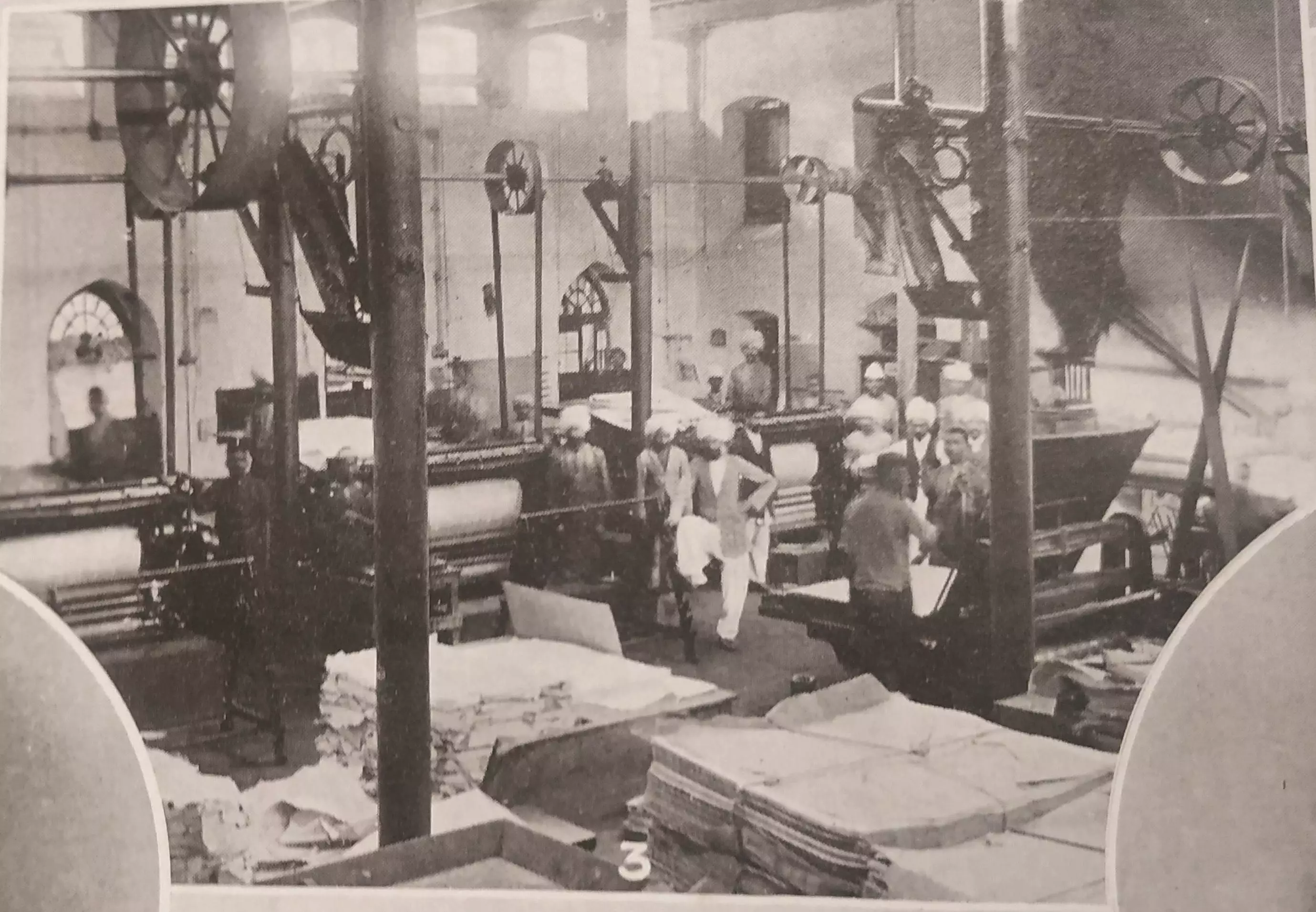
Rotary litho machines in operation at Mufid-i-Am Press
Like all printers and publishers of that era, it also had its own showroom which stocked books printed at the Mufid-i-Am Press as well as other presses for which the firm were authorized agents:
The book-selling department comprises a great variety of volumes, chiefly of an educational character, printed in type, or in manuscript, in ten languages, among which Oriental tongues predominate. … Large contracts for all classes of printing have been entered into with several Government departments, and trading connections have been established throughout India—in fact, in all important centres, from Afghanistan in the north to Ceylon in the south—while publications issued from the press are well known in nearly every part of the world.
Munshi Gulab Singh commissioned a wide variety of books including textbooks, school guides and dictionaries. Perhaps the most ambitious scholarly project undertaken by him was the Punjabi-English dictionary. In the preface to the dictionary (1895), after noting that none of the existing dictionaries were comprehensive enough to cater to the needs of the entire province, Gulab Singh recounts how the dictionary came into being:
The Punjab Government in …June 1884 asked the late Munshi Harsukh Rai, Proprietor of the Koh-i-Nur Press, to bring out a revised and enlarged Dictionary, and promised to encourage the venture by purchasing copies of the book, and granting a bonus—both aggregating in value to Rs. 5,000, on the condition that the book met with the approval of the Punjab Text-Book Committee. … The specimen pages, which were submitted to that body by Munshi Harsukh Rai, first of all in May 1886, were closely scrutinised. After the form and arrangement of the book had met with the approval of the Committee, the first sixteen pages were submitted to it for examination. Every page of the book was shown to the Committee before it was printed off. The first three letters of the alphabet were not yet completed when Munshi Harsukh Rai died, and in April 1891, the Government transferred the work to us … and instructed us to finish it as quickly as possible what had been already delayed very long. We had to order large quantities of new type in order to expedite the printing.
The compilation of the dictionary was a collaborative effort led by Bhai Maya Singh, a scholar-activist, who laboured on it for ten long years. But without the support of Munshi Gulab Singh and his press, it might never have seen the light of the day. The dictionary continues to remain popular and has never been out of print.
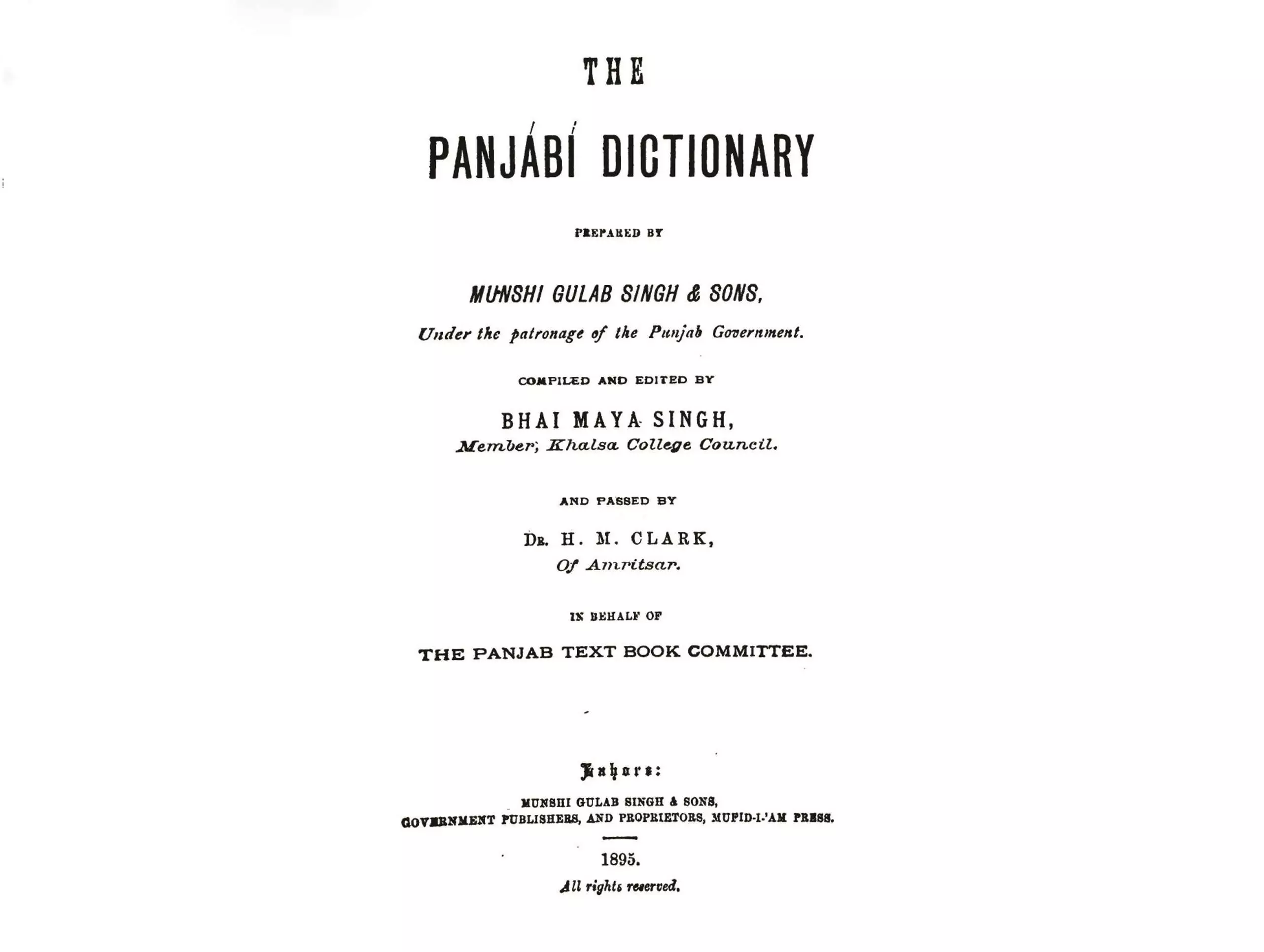
For his efforts, Gulab Singh was awarded with the title of ‘Rai Sahib’, a middling honour bestowed by the colonial government. Henceforth, the publishing firm was known as Rai Sahib M. Gulab Singh & Sons.
A national footprint
When Rai Sahib Gulab Singh died in 1898, the firm was active only in the Punjab region. After his death, his two sons Rai Bahadur Mohan Lal and Lala Lal Chand took over the reins of management. In 1907, they were successful in winning a tender from the Government of India to print all the standard forms used in its various departments. A new press was established in Calcutta to fulfil this contract. A printing press was also established in Allahabad. By the 1920s, the firm of Rai Sahib Munshi Gulab Singh & Sons had become so dominant in arena of government print contracts that its rivals complained vehemently.
They circulated pamphlets with titles such as The story of a government contract as narrated by the press of the province: patronage and favour to one press for 44 years. This does not seem to have dented the firm’s business or its standing with government. However, by the 1940s, they were colluding with the same rivals to fix prices for government contracts.
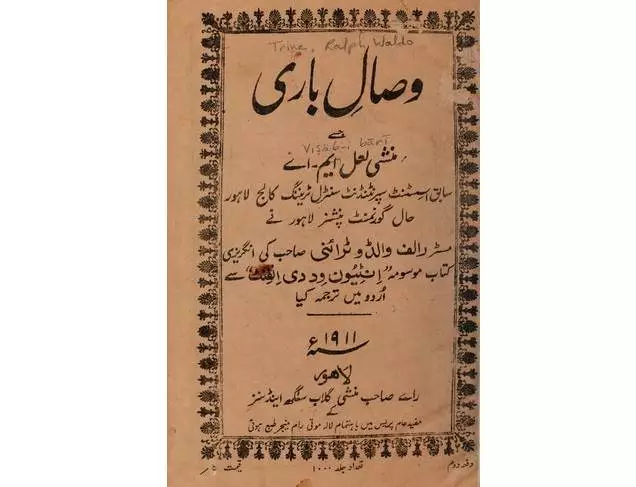
Imprint from Rai Sahib Munshi Gulab Singh & Sons
The 1947 Partition was a period of great turmoil for the press and its owners who had to leave everything behind and settle down in Delhi where they continued their business. The printing press passed on to other hands and still seems to be in operation. The prominent position that it occupied in the book culture of Lahore is supported by the author Pran Nevile’s recollection. A native of Lahore, Nevile could recall the press during a visit to the city in 2018 (The Friday Times, 15 June 2018):
We had a lot of bookshops. Anarkali has Rama Krishna. Minerva Book Depot. Urdu Bazaar was Mohanlal Road. It had college books. Left and right both. You reached there from the circular road to the Kachehri and opposite that. They had a chaapa khana (printing press) there. It was called Munshi Gulab Singh & Sons. This printing press is still there.


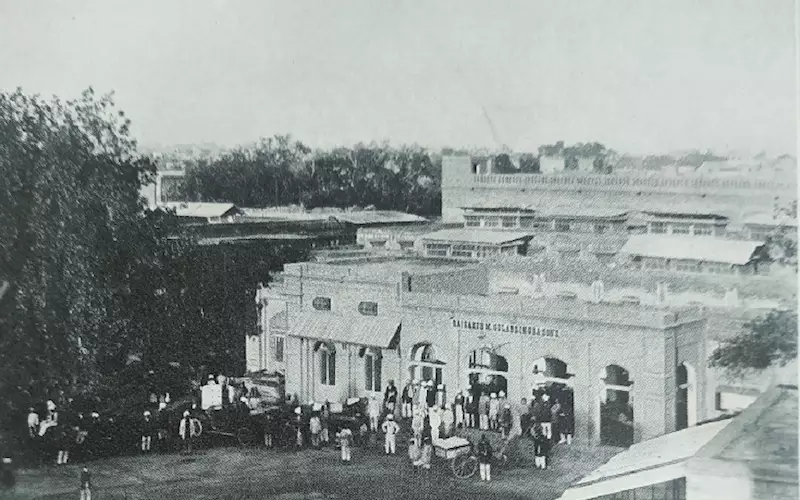








 See All
See All